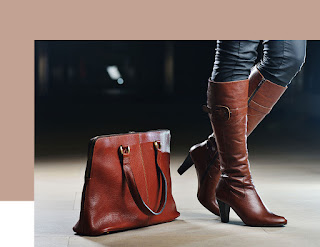All You Need To Know About Synthetic leather, Faux Leather and PVC leather
Polyvinyl chloride, (PVC), and polyurethane are the most common synthetic leather materials. These are plastic-based materials. Pleather, another term for fake leather, comes from the term plastic-leather, and there are many manufacturer and exporters of PVC leather
These two common synthetic materials have raised concerns about the environmental safety and dangers of vegan skin. Although vegan leathers are very rare, it is possible to find eco-friendly products made from natural materials such as cork (check our new cork collection or learn about cork here), cork, kelp, and pineapple leaves.
How Is Vegan Leather Made
Synthetic leather is made with different chemicals and uses a completely different manufacturing process than real leather. Fake leather is made by bonding a plastic coating to a backing fabric. The types of plastic used in these coatings are varied and can be recycled.
PVC is less common than in the 1960's or 70's but can still be found in some vegan leather. PVC can release dioxins that are dangerous in tight spaces, and even more dangerous if they're burned. To make it flexible, it also uses plasticisers like phthalates. They can be extremely toxic depending on the type of plasticizer used. Greenpeace has described it as the "single most harmful plastic"
PU is the more advanced and less harmful plastic. It is continually being technical developed to minimize its flaws, such as the hazardous chemicals it releases during manufacturing and oil-based polymers it uses that make use fossil fuels.

Image:- Manufacturer of Faux leather -GTEX Fabrics
Vegan Versus Real Leather
When deciding between vegan leather and real leather, the main concern is its impact on animals and the environment. Although vegan leather may seem to be an environmentally-friendly product, it is not always true.
Vegan Leather Is Good For The Environment.
Faux leather, also known as vegan leather, is made from material that is not animal skins. However, this can be a great benefit for animal advocates. Synthetic leather is harmful to the environment and humans because of the toxic chemicals in the plastics used. PVC-based synthetics can release dangerous dioxins that can cause reproductive and developmental problems and even cancer. Vegan leathers are made from synthetics that don't completely biodegrade. Although they can be reduced to some degree, they can still release toxic substances and phthalates which can cause harm to animals and the environment.
Vegan Leather Is Better Than Real leather?
When comparing vegan leather and real leather, quality and durability are important factors to consider. Although vegan leather can be thinner than real leather, it is also lighter than real leather. This makes it more versatile for fashion. However, it is less durable than real leather. If properly cared for, leather can last for decades. Conversely, shoes made of good quality faux leather might last only a few years. This is a crucial factor in deciding between genuine leather and fake leather. The environmental impact of having to replace a fake leather product multiple time is likely to be more harmful than purchasing one real leather item.
Synthetic leathers can also become very unattractive, whereas leather ages and forms a patina. This is considered to be an added character.
Faux leather, particularly PVC-based leather, isn’t breathable. Real leather has pores through the skin that allow for air to circulate. For clothing such as jackets, wearing vegan leather for prolonged periods of time can make it uncomfortable.
Faux leather can be more affordable than real leather due to other environmental factors. It's much cheaper to make synthetic leather than to make real leather. Leather products are crafted with great skill. Customized leather products like sofas, jackets, and luggage can cost thousands of dollars. These products are high quality and durable, which allows manufacturers to charge these high prices.
Vegan Leather Maintaining
Image:- Manufacture of PVC leather- GTEX Fabrics
Vegan leather has a plastic coating that makes it waterproof. It can be cleaned with mild detergent, or by wiping it clean with a damp cloth. However, conditioning products cannot penetrate it to prevent it from drying out and cracking. This can happen if the faux leather is exposed to the sun and/or if it is of poor quality. You can buy certain products that will protect the plastic from the sun's rays and high temperatures. These products can soften the material.
How To Repair Vegan Leather
A faux leather repair kit can be used to replace or patch up any damaged areas. They can be purchased online and are suitable for different types of faux leather.
Vegan Leather Is Good Quality
There are many quality levels for vegan leather. Just like real leather, it can be made to last longer. Faux leather can be cheaper than real leather and has a lower quality than genuine leather. Faux leather is less durable than real leather, and it tends to be thinner. It can easily tear or scuff over time.
How To Wrinkle Vegan Leather
You should not iron vegan leather that has wrinkles by directly applying the iron to the surface. The quality of the material will determine the method that you use to remove wrinkles. Manufacturer of Synthetic leathers have plastic in them so heat won't mix well with them. This can lead to the product being damaged. Faux leathers of high quality can be steam cleaned if covered with a towel, sheet or lining. However, they are more tolerant to heat and should still be handled carefully. You shouldn't heat faux leather for longer than 30 seconds.

Image:- Manufacturer and Exporters of PVC leather
How To Shrink Vegan Leather
Method
1. To clean the item and prevent contamination, wash it in warm water.
2. To prevent the polyurethane from slipping out, place it in an old pillowcase. Tie the top with a string or shoelace. These materials can get too hot to stick to dryer drums, causing damage to jackets and making a mess.
3. Turn the dryer to high. Allow the dryer to run for approximately an hour. Let the jacket cool down, then fit it. You can repeat the process until you are satisfied.
Can You Stretch Vegan Leather?
Faux leather can stretch but not as much like real leather. It is best to avoid stretching fake leather as it can increase the chance of cracking.
Vegan Leather Can Be Divorced?
Faux leather can be damaged if you try to distress it. People tend to distress faux leather with thin layers of acrylic/fabric Paints. However, thick layers can cause vegan leather to crack and peel. Use paints/dyes that are suitable for the material. Solvents can eat away at pleather.
Before you apply the paint to the entire surface, make sure that the paint is tested on a small area.
How To Dye Vegan Leather
Faux leather is less permeable than real leather. This means that it cannot absorb colour dyes as well as real leather. You should remember that faux leather products can be dyed over and over again as the colour fades.
Method
1. To remove dirt and dust particles, clean the pleather surface with a clean cloth. Pure alcohol can be used to clean the product.
2. After cleaning and drying, your vegan leather product can be dyed with upholstery glue. For the recommended drying times, please refer to the instructions provided on the paint product.
Before you apply the paint to the entire surface, make sure that the paint is tested on a small area.
How To Soften Vegan Leather
Because vegan leather is more permeable than genuine leather, traditional leather conditioners have limited effect on softening it. To soften faux leather, vinyl conditioner is recommended. It should be applied using a soft cloth in small circular movements. After the conditioner has dried, you should remove it with a clean cloth. You can repeat the process until you achieve the desired softness.
Article Credit:- GTEX Fabrics. GTEX Fabrics is manufacturer and exporters of artificial leather, faux leather, Synthetic leather.



Comments
Post a Comment